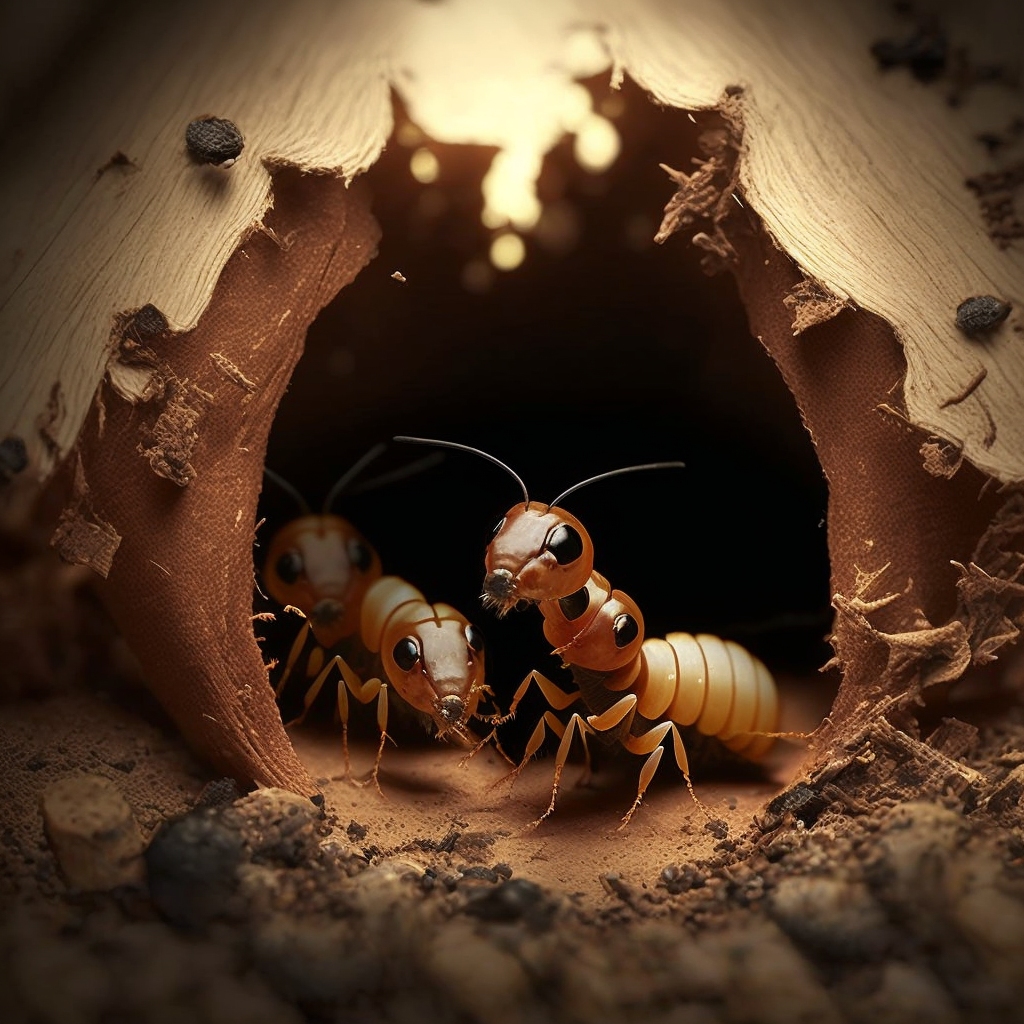Termite Mud Nests What you must Know
Introduction to termite mud nests
Termite mud nests, also known as termite mounds, are structures built by certain species of termites in order to provide a safe and comfortable habitat for their colonies. These nests are typically found in tropical and subtropical regions, and are known for their distinctive appearance and unique features.
Structure and composition of termite mounds
Termite mounds are made up of a mixture of soil, saliva, and feces, which the termites use to construct the nest. The outer layer of the nest is made up of a hard, clay-like substance, which provides protection against predators and the elements. The interior of the nest is made up of a series of tunnels and chambers, which the termites use for various purposes such as breeding, feeding, and storing food.
One of the most striking features of termite mounds is their size and shape. Some species of termites are able to build mounds that are several meters tall and wide, with intricate and complex architectures. These mounds often have a conical or dome-like shape, with the entrance located at the base of the structure.
Function and purpose of termite mounds
Termite mounds serve a number of important functions for the termites that inhabit them. One of the primary functions of the mound is to provide a stable and regulated environment for the termites to live in. The mound helps to maintain the temperature, humidity, and ventilation levels inside the nest, which are critical for the survival and well-being of the termites.
In addition to providing a stable living environment, termite mounds also serve as a food storage and processing center for the colony. Termites are able to forage for food from a wide area around the mound, and bring it back to the nest to be processed and stored. The termites are able to break down wood and other organic matter into a form that they can digest, and use the by-products of this process to help build and maintain the nest.
Termite mounds are also important for the termites’ social organization. The termites living in a mound are organized into a complex hierarchy, with different individuals performing different tasks and roles within the colony. The mound serves as a central hub for all of the termites’ activities, and helps to coordinate the work and behavior of the colony as a whole.
Ecological benefits of termite mounds
Termite mounds are not only important for the termites that build them, but they also have a number of ecological benefits. For example, termite mounds can help to promote soil fertility by breaking down organic matter and releasing nutrients back into the soil. They can also help to prevent erosion by stabilizing the soil and increasing water infiltration.
Termite mounds are also important for the other organisms that live in and around them. Many species of birds, reptiles, and other animals use termite mounds as nesting sites, and some species of plants have even evolved to rely on termites for seed dispersal.
Threats to termite mounds
Despite their ecological importance, termite mounds are often threatened by human activities. Deforestation, urbanization, and agricultural practices can all have negative impacts on termite mounds and the ecosystems they support. It is important to protect and preserve termite mounds in order to maintain the health and balance of the ecosystem.
Studying and learning about termite mounds
There are a number of different ways to study and learn about termite mounds. Many people visit natural areas where termite mounds are found in order to observe and learn about these structures firsthand. Others may study termite mounds through research or by using specialized tools and techniques, such as microscopes or computer modeling.
Cultural and symbolic significance of termite mounds
In addition to their scientific and ecological significance, termite mounds have also been admired and revered by people throughout history. In many cultures, termite mounds are seen as symbols of strength, perseverance, and community. Some people even consider termite mounds to be sacred sites, and may visit them for spiritual or cultural reasons.
Conclusion
In summary, termite mud nests are fascinating and important structures that serve a number of ecological, scientific, and cultural purposes. These nests are built by certain species of termites, and are made up of a mixture of soil, saliva, and feces.
They provide a stable and regulated living environment for the termites, serve as a food storage and processing center, and help to coordinate the social organization of the colony. Termite mounds also have a number of ecological benefits, and are often threatened by human activities.
There are a number of ways to study and learn about termite mounds, and they have been admired and revered by people throughout history for their symbolic and cultural significance.



